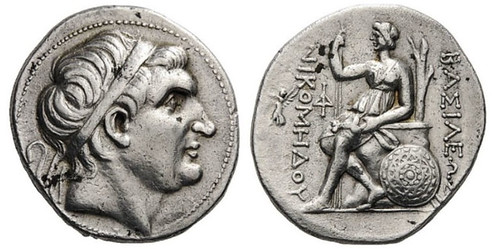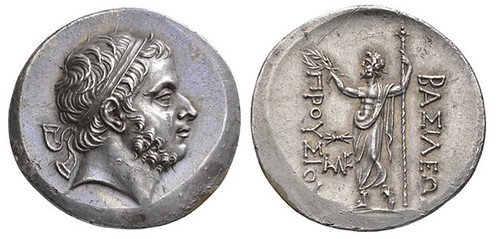
PREV ARTICLE
NEXT ARTICLE
FULL ISSUE
PREV FULL ISSUE
COINS OF THE KINGS OF BITHYNIAHistory has so much to teach us about history and geography. The latest Mike Markowitz CoinWeek Ancient Coin Series article discusses the Kings of Bithynia. Here's an excerpt - see the complete article online for more. -Editor ALONGSIDE THE GREAT Seleucid and Ptolemaic empires that emerged from the breakup of Alexander the Great's empire following his death in 323 BCE, several small Greek-speaking kingdoms sprang up. Some of these produced exceptionally artistic portrait coins, and for almost two centuries, Bithynia's issues ranked among the finest.
Bithynia is a fertile, hilly region in the northwestern corner of Anatolia. In 297 BCE, Zipoetes, a tribal chieftain, declared himself king. Many years later, this date became Year 1 of the
Nikomedes I Nikomedes came to the throne in 278 BCE when he was about 22 years old. He executed two of his brothers, but a third, Zipoetes II, escaped and raised a revolt. To crush this rebellion, Nikomedes hired Gauls, ferocious Celtic warriors that had migrated into the neighboring region of Thrace. These Gauls later settled in a part of Anatolia that became known by their name: Galatia. In 264 BCE, Nikomedes founded his new capital city, modestly naming it Nikomedia (or Nicomedeia; today Iznik, Turkey). Centuries later, under Emperor Diocletian (ruled 284 – 305 CE,) Nikomedia became the eastern capital of the Roman Empire.
Prusias I
Prusias (or Prousias), son of Ziailas, was about 17 years old when he became king in 230 BCE. During his long reign of 48 years, Bithynia reached the height of its power. He earned his nickname Cholus (
High-grade silver tetradrachms of Prusias I currently sell in major auctions for $2,000 to $5,000 and up. His bearded, diademed portrait appears on the obverse. On the reverse, an elegant standing figure of the god Zeus extends his right arm to hold a wreath above the king's name. This may represent a famous statue, Zeus Stratios, that stood in a temple in Nikomedia. Some cataloguers describe the figure as Zeus Stephanophoros (
To read the complete article, see:
Wayne Homren, Editor The Numismatic Bibliomania Society is a non-profit organization promoting numismatic literature. See our web site at coinbooks.org. To submit items for publication in The E-Sylum, write to the Editor at this address: whomren@gmail.com To subscribe go to: https://my.binhost.com/lists/listinfo/esylum All Rights Reserved. NBS Home Page Contact the NBS webmaster 
|


